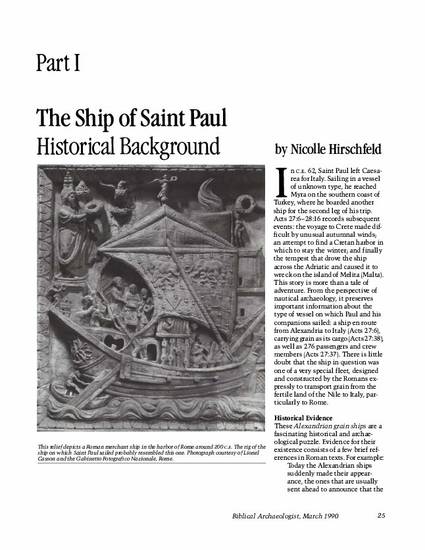
In C.E. 62, Saint Paul left Caesarea for Italy. Sailing in a vessel of unknown type, he reached Myra on the southern coast of Turkey, where he boarded another ship for the second leg of his trip. Acts 27:6-28:16 records subsequent events: the voyage to Crete made difficult by unusual autumnal winds; an attempt to find a Cretan harbor in which to stay the winter; and finally the tempest that drove the ship across the Adriatic and caused it to wreck on the island of Melita (Malta). This story is more than a tale of adventure. From the perspective of nautical archaeology, it preserves important information about the type of vessel on which Paul and his companions sailed: a ship en route from Alexandria to Italy (Acts 27:6), carrying grain as its cargo (Acts 27:38), as well as 276 passengers and crew members (Acts 27:37). There is little doubt that the ship in question was one of a very special fleet, designed and constructed by the Romans expressly to transport grain from the fertile land of the Nile to Italy, particularly to Rome.
